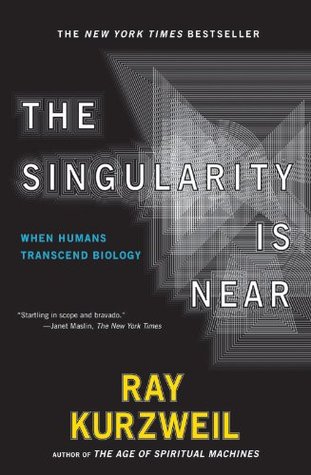More on this book
Community
Kindle Notes & Highlights
I realized that most inventions fail not because the R&D department can’t get them to work but because the timing is wrong. Inventing is a lot like surfing: you have to anticipate and catch the wave at just the right moment.
Over the last twenty years, I have come to appreciate an important metaidea: that the power of ideas to transform the world is itself accelerating.
I developed a theory I call the law of accelerating returns, which explains why technology and evolutionary processes in general progress in an exponential fashion.5
In chapter 7, I describe myself as a “patternist,” someone who views patterns of information as the fundamental reality. For example, the particles composing my brain and body change within weeks, but there is a continuity to the patterns that these particles make.
What, then, is the Singularity? It’s a future period during which the pace of technological change will be so rapid, its impact so deep, that human life will be irreversibly transformed.
By the end of this century, the nonbiological portion of our intelligence will be trillions of trillions of times more powerful than unaided human intelligence.
There will be no distinction, post-Singularity, between human and machine or between physical and virtual reality.
But because we’re doubling the rate of progress every decade, we’ll see the equivalent of a century of progress—at today’s rate—in only twenty-five calendar years.
Similarly at Time magazine’s Future of Life conference, held in 2003 to celebrate the fiftieth anniversary of the discovery of the structure of DNA, all of the invited speakers were asked what they thought the next fifty years would be like.5 Virtually every presenter looked at the progress of the last fifty years and used it as a model for the next fifty years. For example, James Watson, the codiscoverer of DNA, said that in fifty years we will have drugs that will allow us to eat as much as we want without gaining weight.
For example, nanotechnology-based manufacturing devices in the 2020s will be capable of creating almost any physical product from inexpensive raw materials and information.
To put the concept of Singularity into further perspective, let’s explore the history of the word itself. “Singularity” is an English word meaning a unique event with, well, singular implications.
Murray Gell-Mann provides one definition of complexity along these lines. He defines the “algorithmic information content” (AIC) of a set of information as “the length of the shortest program that will cause a standard universal computer to print out the string of bits and then halt.”4
The human brain is about 75,000 times heavier than the 0.02 grams of neurons in this portion of the retina, resulting in an estimate of about 1014 (100 trillion) instructions per second for the entire brain.37
These estimates all result in comparable orders of magnitude (1014 to 1015 cps). Given the early stage of human-brain reverse engineering, I will use a more conservative figure of 1016 cps for our subsequent discussions.
These chunks represent patterns (such as faces) as well as specific knowledge. For example, a world-class chess master is estimated to have mastered about 100,000 board positions. Shakespeare used 29,000 words but close to 100,000 meanings of those words. Development of expert systems in medicine indicate that humans can master about 100,000 concepts in a domain. If we estimate that this “professional” knowledge represents as little as 1 percent of the overall pattern and knowledge store of a human, we arrive at an estimate of 107 chunks.
Based on my own experience in designing systems that can store similar chunks of knowledge in either rule-based expert systems or self-organizing pattern-recognition systems, a reasonable estimate is about 106 bits per chunk (pattern or item of knowledge), for a total capacity of 1013 (10 trillion) bits for a human’s functional memory.
Based on this observation we can envision a more insidious possibility. In a two-phased attack, the nanobots take several weeks to spread throughout the biomass but use up an insignificant portion of the carbon atoms, say one out of every thousand trillion (1015). At this extremely low level of concentration the nanobots would be as stealthy as possible. Then, at an “optimal” point, the second phase would begin with the seed nanobots expanding rapidly in place to destroy the biomass. For each seed nanobot to multiply itself a thousand trillionfold would require only about fifty binary
...more
Eliezer Yudkowsky has extensively analyzed paradigms, architectures, and ethical rules that may help assure that once strong AI has the means of accessing and modifying its own design it remains friendly to biological humanity and supportive of its values. Given that self-improving strong AI cannot be recalled, Yudkowsky points out that we need to “get it right the first time,” and that its initial design must have “zero nonrecoverable errors.”45


